home > articles > theology > How Old Does The Bible Teach The Earth Is?
One of the most contentious issues among Christians today is the age of the universe. Is it 6000 years old like 17th century Bishop Ussher calculated, or is it around 13,000,000,000 years old like scientists say? How we determine the answer determines how we interpret the Bible and understand the world around us…

The opening verse of Genesis is perhaps the most famous, and probably the most read, verse in the Bible. It is so plain, so clear, so unambiguous, that nearly every English translation of the Scriptures for the past 400 years has rendered it identically. Of all the statements that God could have chosen to utter first in His revelation to mankind, He gave us this one. Little wonder. If this statement is proven to be false then the entire credibility of the Bible is undermined. But if this statement is found to be true its ramifications are infinite!
 But a strange thing has happened ever since an Irish Bishop published some genealogical calculations around 400 years ago. He asserted that Genesis 1:1 could be dated: October 23rd 4004 BC. Within years of this assertion being published it was incorporated into the margins of Bibles by Publishers and led to this date being accepted by Bible readers around the English-speaking-world almost without question. Bishop Ussher could never have foreseen that his chronological speculating would result in a U.S. Supreme Court trial in which trusting Christians would be humiliated!
But a strange thing has happened ever since an Irish Bishop published some genealogical calculations around 400 years ago. He asserted that Genesis 1:1 could be dated: October 23rd 4004 BC. Within years of this assertion being published it was incorporated into the margins of Bibles by Publishers and led to this date being accepted by Bible readers around the English-speaking-world almost without question. Bishop Ussher could never have foreseen that his chronological speculating would result in a U.S. Supreme Court trial in which trusting Christians would be humiliated!
 I grew up in a church where it was promoted that the Bible taught the earth was around 6,000 years old and that God created everything in six literal, consecutive, 24-hour days. For years I never questioned this. The global scientific community had been blinded by sin and was not able to interpret the natural world due to their spiritual blindness. Hence, any measurements they made based on the ordinary laws of physics were completely unreliable because they were unregenerate and were looking at a universe totally depraved by sin which made estimating its age near impossible. For years I accepted this without question.
I grew up in a church where it was promoted that the Bible taught the earth was around 6,000 years old and that God created everything in six literal, consecutive, 24-hour days. For years I never questioned this. The global scientific community had been blinded by sin and was not able to interpret the natural world due to their spiritual blindness. Hence, any measurements they made based on the ordinary laws of physics were completely unreliable because they were unregenerate and were looking at a universe totally depraved by sin which made estimating its age near impossible. For years I accepted this without question.
 For some reason, in the church I grew up in, we were tacitly taught that if the earth was older than 6,000 years old the entire credibility of the Bible would be undermined. For those Christians who embarked on a study of physical science through higher education and learned how the age of things was calculated, they were soon confronted with a major contradiction in their understanding of the Bible.
For some reason, in the church I grew up in, we were tacitly taught that if the earth was older than 6,000 years old the entire credibility of the Bible would be undermined. For those Christians who embarked on a study of physical science through higher education and learned how the age of things was calculated, they were soon confronted with a major contradiction in their understanding of the Bible.
 For example, 6,000 years for the age of the earth evaporates in the presence of tree-rings. As Christian students in universities examined how trees add a new tree ring to every year of their life they discovered that some trees have over 10,000 rings! (Becker, B. and B. Kromer, 1993 “The Continental Tree-Ring Record — Absolute Chronology, 14C Calibration and Climatic Change at 11 ka.“, Palaeogeography Palaeoclimatology Palaeoecology 103 (1-2): 67-71).
For example, 6,000 years for the age of the earth evaporates in the presence of tree-rings. As Christian students in universities examined how trees add a new tree ring to every year of their life they discovered that some trees have over 10,000 rings! (Becker, B. and B. Kromer, 1993 “The Continental Tree-Ring Record — Absolute Chronology, 14C Calibration and Climatic Change at 11 ka.“, Palaeogeography Palaeoclimatology Palaeoecology 103 (1-2): 67-71).  The Guinness Book of Records lists the oldest tree ever discovered as a Californian Redwood at over 10,000 years old but estimates it to have been closer to 12,000 years old. As well as tree-rings, polar ice layers reveal that the earth is at least over 420,000 years old (“Greenland Ice Cores: Frozen in Time”, R. Alley and M. Bender, Scientific American, February 1998 pp. 80-85).
The Guinness Book of Records lists the oldest tree ever discovered as a Californian Redwood at over 10,000 years old but estimates it to have been closer to 12,000 years old. As well as tree-rings, polar ice layers reveal that the earth is at least over 420,000 years old (“Greenland Ice Cores: Frozen in Time”, R. Alley and M. Bender, Scientific American, February 1998 pp. 80-85).
Even if these natural measurements have an error rate of a few percent, there is still a huge difference between 420,000 years and 6,000 years! Another means to measure the age of the universe that students of physical science are confronted with is: starlight. This is what highly regarded Christian apologist, Greg Koukl, says about this-
One fact has continued to hold my attention in the ongoing debate between creationists on the age of the universe. I can see stars. On a clear night I see thousands of them. Astronomers seem to know a lot about these twinkling specks of light in the heavens, even though they are very far away. This observation prompts a simple question for those who believe the universe is relatively young–thousands of years old and not billions. Do stars exist? Are these astronomers measuring characteristics of actual heavenly bodies when they apply their discipline? “Of course stars exist,” is the reply. “We can see them.” But this raises a problem for the young-earth view. The existence of stars the way we see them is evidence for an old earth, not a young one. If some stars are millions of light years away, then their light must have traveled for millions of years for us to see it, making the recent-creation view impossible.
Whenever these age-measurement tools (tree-rings, ice-cores, star-light) were raised to support the scientific idea that the earth is much much older than 6,000 – 10,000 years old, my childhood church responded by saying that God would have created these things to look old. Greg Koukl goes on to address this issue as well-
Appearance of Age?
This point has not been lost on young-earthers, who offer a standard response. Genesis indicates that when God created Adam and Eve they appeared as adults. In the same way, God created the universe with the appearance of age. Light from stars millions of light years away from the earth was created in transit. Observers on earth (Adam and Eve) could see the star instantly, in spite of the great distances, in spite of the fact that the universe was only days old. This tidy rejoinder seems so sensible at first glance it’s easy to be mislead by it. It’s irresistible to those Christians who have a weakness for snappy explanations that save the paradigm.
Such answers may fend off attack for the moment, but often do not have the backbone to survive closer scrutiny. This one does not. First, this comeback is a tacit admission that the universe does, in fact, appear old. This concedes a tremendous amount of ground, weakening the young-earthers’ case considerably. Isn’t it safer to draw conclusions on the way things actually look rather than suggest some divine sleight of hand?
Second, it’s not clear that the observation is even accurate. There is a difference between the appearance of maturity and the appearance of age. True, Adam and Eve were created as adults. There’s no evidence, though, that they appeared old–that is, aged. When something appears aged, there is evidence that the passage of time has left its mark. There may be calluses on the hands, wrinkling of the skin due to sun exposure, or plaque build-up in the circulatory system. These are bona fide signs of age. Simply being physically mature is not the same as aging. Starlight actually shows signs of age. The distance it needs to travel to be visible on earth requires the passage of massive amounts of time. Starlight is not mature; it is old. Third, even if the account suggests Adam was created with the appearance of age, where in the text do we get the idea that the entire universe was created like that? There was a practical necessity for creating the first humans as adults. They had to accomplish adult tasks right from the outset.
What practical necessity required God to instantly create other features of the world with the appearance of age? Why the “appearance” of millions of years of erosion on the moon? Why the deep canyons half way around the world from Eden that “appear” to have been slowly carved out of solid rock by running water? Why do the walls of these canyons reveal earth that “appears” to have been laid down one millimeter at a time by ancient accretions of atmospheric dust? “God’s ways are not our ways,” they reply. True enough, but that only applies when we know how God has acted but don’t understand why. Without an explicit statement from the text that the entire universe actually was created with the appearance of age, and lacking good reason why God might do so, we have no justification for assuming He did. The case gets weaker and weaker as the layers of speculation mount. These are serious problems for the God-created-the-light-in-transit theory.
 Greg Koukl’s arguments against the idea that God created the world to look old makes sense. Added to these arguments, others have realised that if a God of all truth deliberately created everything in the universe to appear to be ancient (much, much older than 6,000 years) and yet tacitly claimed in Scripture that it was no more than 6,000 years old, He was at least vulnerable to the accusation of deception! As Greg Koukl asks, what purpose would God have in uniformly giving the entire universe the appearance of old age if it was in reality extremely young?
Greg Koukl’s arguments against the idea that God created the world to look old makes sense. Added to these arguments, others have realised that if a God of all truth deliberately created everything in the universe to appear to be ancient (much, much older than 6,000 years) and yet tacitly claimed in Scripture that it was no more than 6,000 years old, He was at least vulnerable to the accusation of deception! As Greg Koukl asks, what purpose would God have in uniformly giving the entire universe the appearance of old age if it was in reality extremely young?
24Hour Creation Days?
 GAP THEORY?
GAP THEORY?
The obvious old age of the earth has led to some degree of compromise among those who promote a Young-Earth doctrine as the only way to interpret Scripture. The most common approach is to see an unspecified time-gap between Genesis 1:1 and Genesis 1:2. This gap, it is speculated, could have been millions, even billions of years. But the preparedness to see anything other than a wooden literal understanding of the six creation days as six consecutive 24 hour days continues to be uncompromising. Certain arguments are used to uphold this dogmatic idea that the days of Genesis 1 are 24 hour days. These claims include-
(i) The expression “there was evening and there was morning” in Scripture always refers to a 24 hour day.
This is illogical. The expression “evening and morning” only occurs in Genesis 1.
(ii) The Genesis 1 expression “day” is plain and simple and would ordinarily be understood by any sensible person to mean a ‘day’ of 24 hours.
This is grossly overly simplistic. The Hebrew word for day is ‘yom‘ and is variously understood as a period of ‘time’ throughout Scripture and translated according to its context. This includes-

(iii) Jesus Christ said that the creation of the world took place in 144 hours (six 24 hour days).
No He didn’t. He asserted that God created, but didn’t specify how long it took.
(iv) Our current 7-day-week was instituted at creation, therefore the creation week must have been 6 literal 24 hour days.
Many scholars regard the Creation Week as an ‘analogy’ of our week. They therefore refer to the Creation Days as analogical. The Old Testament is filled with types and shadows which similarly served as analogies.
 These issues strike at the heart of how we interpret and understand Scripture. If we think that words in the Bible are unequivocal (they only ever have one meaning) we will clearly miss how the Bible speaks. Words in the Bible are not unequivocal, they are equivocal. This means that the understanding of words in the Bible is derived from the context in which it is found. For example, what does the Bible mean when it uses words like “salt”, “leaven”, “darkness”, “a thousand”? The answer can only be determined from the context in which the word is found. (By the way, “salt” can mean Sodium Chloride, or Covenant, or Influence. “Leaven” can mean yeast, or moral wickedness, or sinfulness, or Gentiles.) Similarly “day” can mean a 24 hour period, a month, years, an era (“in my Grandfather’s day”) and so on.
These issues strike at the heart of how we interpret and understand Scripture. If we think that words in the Bible are unequivocal (they only ever have one meaning) we will clearly miss how the Bible speaks. Words in the Bible are not unequivocal, they are equivocal. This means that the understanding of words in the Bible is derived from the context in which it is found. For example, what does the Bible mean when it uses words like “salt”, “leaven”, “darkness”, “a thousand”? The answer can only be determined from the context in which the word is found. (By the way, “salt” can mean Sodium Chloride, or Covenant, or Influence. “Leaven” can mean yeast, or moral wickedness, or sinfulness, or Gentiles.) Similarly “day” can mean a 24 hour period, a month, years, an era (“in my Grandfather’s day”) and so on.

There is good reason to consider that the Creation Days were periods of time that perhaps encompassed millions or at least hundreds of thousands of years. But there are some theological reasons offered against this understanding.

Therefore, just as sin came into the world through one man, and death through sin, and so death spread to all men because all sinned—
Romans 5:12 ESV
The argument is made that day-age theories for the age of the universe are theologically inconsistent with the New Testament since there could be no death in the universe prior to Adam’s Fall (Romans 5:12). But take a closer look at Romans 5:12. Is it really saying that Adam’s sin brought death to bacteria, plankton, grass, ants, spiders, birds, whales, and antelopes? Or is it saying that as the Head of the Human Race, Adam’s sin brought spiritual death (in the sense that death is “being separated”) and separated him- and all his descendants (us) from God – Isaiah 59:2? Surely the context of Romans 5 is spiritual life in Christ. It was Adam’s sin which severed that life- but it is Christ’s death and resurrection which restores it. The question therefore is, did ants and antelopes and plankton ever enjoy that kind of spiritual life? Another way of rendering the same question is, do ants and antelopes and plankton have a ‘soul’ to be saved?

 In the ocean of ideas, the S.S. Evolution is sinking and no life-boats have been found to rescue its passengers. And this is heart of the matter that Evolution offers no life-boats: it cannot explain how life began. This point is not lost on Evolutionary Biologists. Their hope a few decades ago was that advanced technology would unlock the mystery of life and reveal how it could be simulated. But alas, the opposite has happened. Breakthroughs in technology have done just the opposite! The discoveries into DNA have shown just how complex even “simple life forms” are. In fact, there is so much complexity and co-dependency of components that it renders evolutionary theory regarding the origins of life impossible.
In the ocean of ideas, the S.S. Evolution is sinking and no life-boats have been found to rescue its passengers. And this is heart of the matter that Evolution offers no life-boats: it cannot explain how life began. This point is not lost on Evolutionary Biologists. Their hope a few decades ago was that advanced technology would unlock the mystery of life and reveal how it could be simulated. But alas, the opposite has happened. Breakthroughs in technology have done just the opposite! The discoveries into DNA have shown just how complex even “simple life forms” are. In fact, there is so much complexity and co-dependency of components that it renders evolutionary theory regarding the origins of life impossible.
 The problem with compromising between Darwinian Evolution and Creationism, called Theistic Evolution, is that it rejects Scriptures direct statements about God creating ex-nihilo (from nothing). God didn’t merely watch things create themselves, as theistic evolution proposes, He directly intervened and created. This is verified by the fossil record. The sudden explosion of lower life forms on earth is referred to as the “Cambrian Explosion”. This concurs with the Biblical revelation in Genesis 1. It is not evidence for evolution or theistic evolution.
The problem with compromising between Darwinian Evolution and Creationism, called Theistic Evolution, is that it rejects Scriptures direct statements about God creating ex-nihilo (from nothing). God didn’t merely watch things create themselves, as theistic evolution proposes, He directly intervened and created. This is verified by the fossil record. The sudden explosion of lower life forms on earth is referred to as the “Cambrian Explosion”. This concurs with the Biblical revelation in Genesis 1. It is not evidence for evolution or theistic evolution.
THE BIG BANG ACTUALLY POINTS TO A CREATOR
Thus says God, the LORD,
who created the heavens and stretched them out,
who spread out the earth and what comes from it,
who gives breath to the people on it
and spirit to those who walk in it:
Isaiah 42:5 (ESV)
A few decades ago Naturalists rejected the idea that an uncreated, eternal God could have created the world. Their explanation for how the universe began? They proposed that all matter was uncreated and eternal! It had always been, they said. But as the science of cosmology developed with exponentially more powerful telescopes and computers, it became more and more obvious that the universe had an origin and ‘birth’ date. When this was first proposed by scientists in the 1950s it was vigorously ridiculed by Naturalists as some attempt to claim that the universe had been “created”. They mockingly referred to this creation-of-the-universe being promoted by scientists as some kind of “Big Bang”. What has become known as “The Big Bang Theory” closely aligns with the Biblical revelation that God spoke and the universe leapt into existence and that He then “stretched out the heavens”.
By faith we understand that the entire universe was formed at God’s command, that what we now see did not come from anything that can be seen.
Hebrews 11:3 (NLT)

 The court case in the U.S. Supreme Court Case in late 2005 found that the science of the Young Earthers was not supported by the evidence. When they lost this case in which they were trying to get Young Earth Creationism taught alongside Darwinian Evolution they cried foul claiming that the Supreme Court was stacked with Secular Humanist judges who were committed to destroying Christianity. But it appears that the judges’ decision was not based on a bias to destroy Christianity but on the evidence presented to them. It must be remembered that Darwinian Evolution was not on trial during this case. According to Dr. Hugh Ross of Reasons To Believe, the transcripts of the court case reveal that the judges really tried to accommodate the Young Earth arguments into the classrooms of Philadelphia, but were not convinced by the scientific reasons to do so.
The court case in the U.S. Supreme Court Case in late 2005 found that the science of the Young Earthers was not supported by the evidence. When they lost this case in which they were trying to get Young Earth Creationism taught alongside Darwinian Evolution they cried foul claiming that the Supreme Court was stacked with Secular Humanist judges who were committed to destroying Christianity. But it appears that the judges’ decision was not based on a bias to destroy Christianity but on the evidence presented to them. It must be remembered that Darwinian Evolution was not on trial during this case. According to Dr. Hugh Ross of Reasons To Believe, the transcripts of the court case reveal that the judges really tried to accommodate the Young Earth arguments into the classrooms of Philadelphia, but were not convinced by the scientific reasons to do so.
THE BIBLE DOES NOT SAY HOW OLD THE EARTH IS
It is a gross misrepresentation of Scripture to declare that the Bible states the universe was created in 144 hours around 6,000 years ago. There are many fine Hebrew scholars who acknowledge that the days of Genesis chapter 1 could be “periods of unspecified time”. To make a young earth the touchstone of the Christian Gospel is theological vandalism! The point of Genesis 1 is not to date-set, but to establish that God created the universe, the earth, and in particular: man.
A much better question than when did God create? is Why did God create? The answer to this question is the answer to life itself.



Amen.
© Andrew Corbett, October 10th 2006
-
Sale!
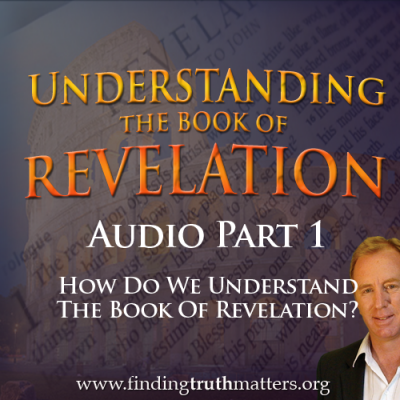
Understand The Book Of Revelation, Part 1 (Radio Edition)
Original price was: $1.25.$0.00Current price is: $0.00. -
Sale!
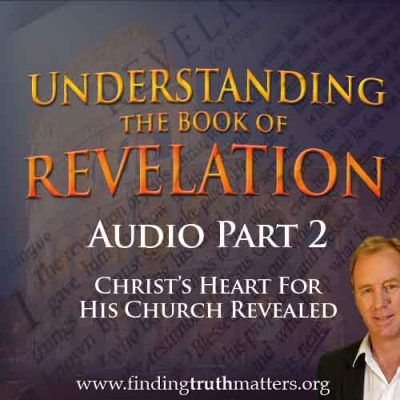
Understand The Book of Revelation, Part 2, Premium Audio Download
Original price was: $1.75.$1.25Current price is: $1.25. -
Sale!
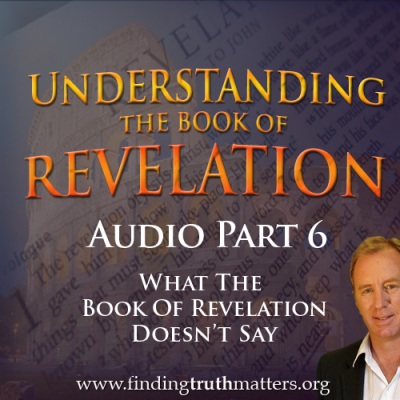
Understand The Book of Revelation, Part 6, Premium Audio Download
Original price was: $1.75.$1.25Current price is: $1.25. -
Sale!
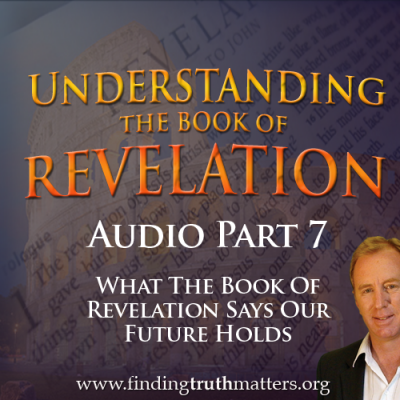
Understand The Book of Revelation, Part 7, Premium Audio Download
Original price was: $1.75.$1.25Current price is: $1.25. -
Sale!
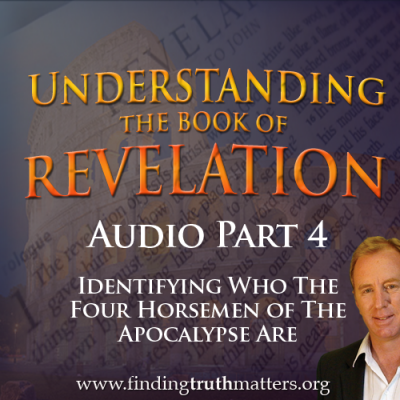
Understand The Book of Revelation, Part 4, Premium Audio Download
Original price was: $1.75.$1.25Current price is: $1.25. -
Sale!
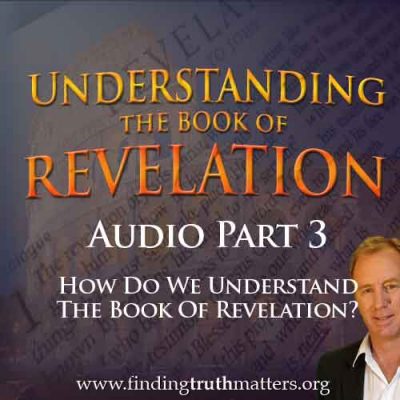
Understand The Book of Revelation, Part 3, Premium Audio Download
Original price was: $1.75.$1.25Current price is: $1.25. -
Sale!
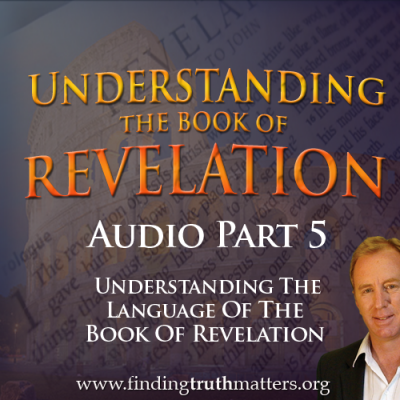
Understand The Book of Revelation, Part 5, Premium Audio Download
Original price was: $1.75.$1.25Current price is: $1.25. -
Sale!
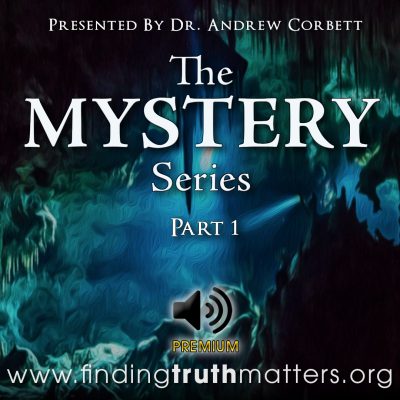
The Mystery Series – Part 1, Premium Audio
Original price was: $1.75.$0.95Current price is: $0.95. -
Sale!
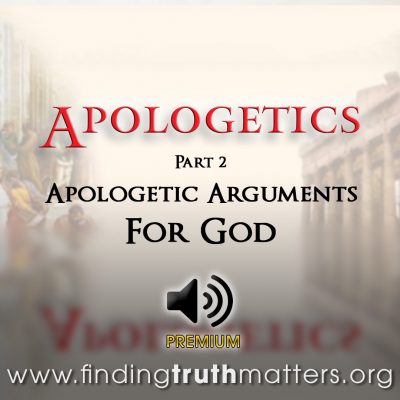
Apologetics Part 2 – The Apologetic Arguments For God, Premium Audio
Original price was: $1.75.$0.95Current price is: $0.95. -
Sale!
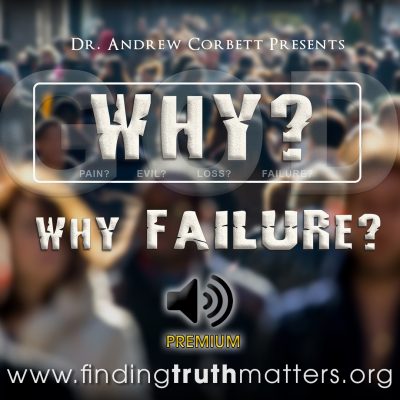
Why Failure?, Premium Audio
Original price was: $1.75.$0.95Current price is: $0.95. -
Sale!
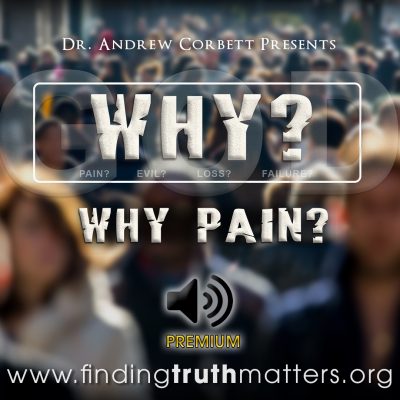
Why Pain?, Premium Audio
Original price was: $1.75.$0.95Current price is: $0.95. -
Sale!
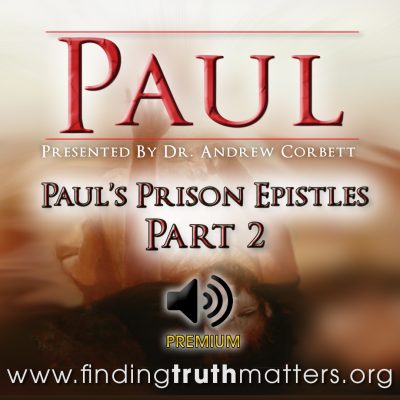
Paul’s Prison Epistles Part 2, Premium Audio
Original price was: $1.75.$0.95Current price is: $0.95.






































0 Comments